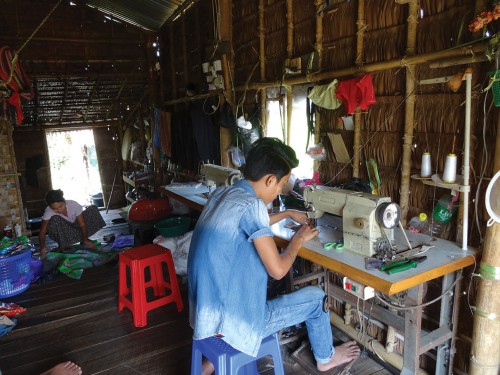Off-farm Employment around Yangon: Survey Results
Off-farm employment is the sole source of earnings for 56% rural households around Yangon and it provides 78% of rural households income.
By Aung Htun
 KEY FINDINGS
KEY FINDINGS
- Off-farm employment is extremely important, even among the wealthiest households and largest landholders. It provides work of 78% of all households surveyed, and is the sole source of earnings for 56% of households.
- Aquaculture appears to create additional off-farm employment opportunities compared to areas dependent on paddy and annual crop cultivation, in terms of both employment duration and numbers of jobs created.
- Off-farm labor markets in the areas surveyed appear well integrated, as indicated by similar wage rates across clusters, but there is a large gender disparity in the wages paid for comparable forms of work.
- Remittances are important for receiving households in the village tracts surveyed, but their contribution to off-income is small in comparison to that of non-farm enterprises and wage labor. However, the labor shortages created by migration appear to drive up rural wages, benefitting individuals employed off-farm.
- Significant improvements have occurred in transport services and travel times, geographical connectivity and human mobility within the last five years, but there is still much scope for infrastructure development that would accelerate these further.
- The rural non-farm economy is growing quickly and restructuring in response to these stimuli.
Photo: Off-farm Employment Around Yangon (photo credit: Benjamin Belton)



 Print
Print Email
Email